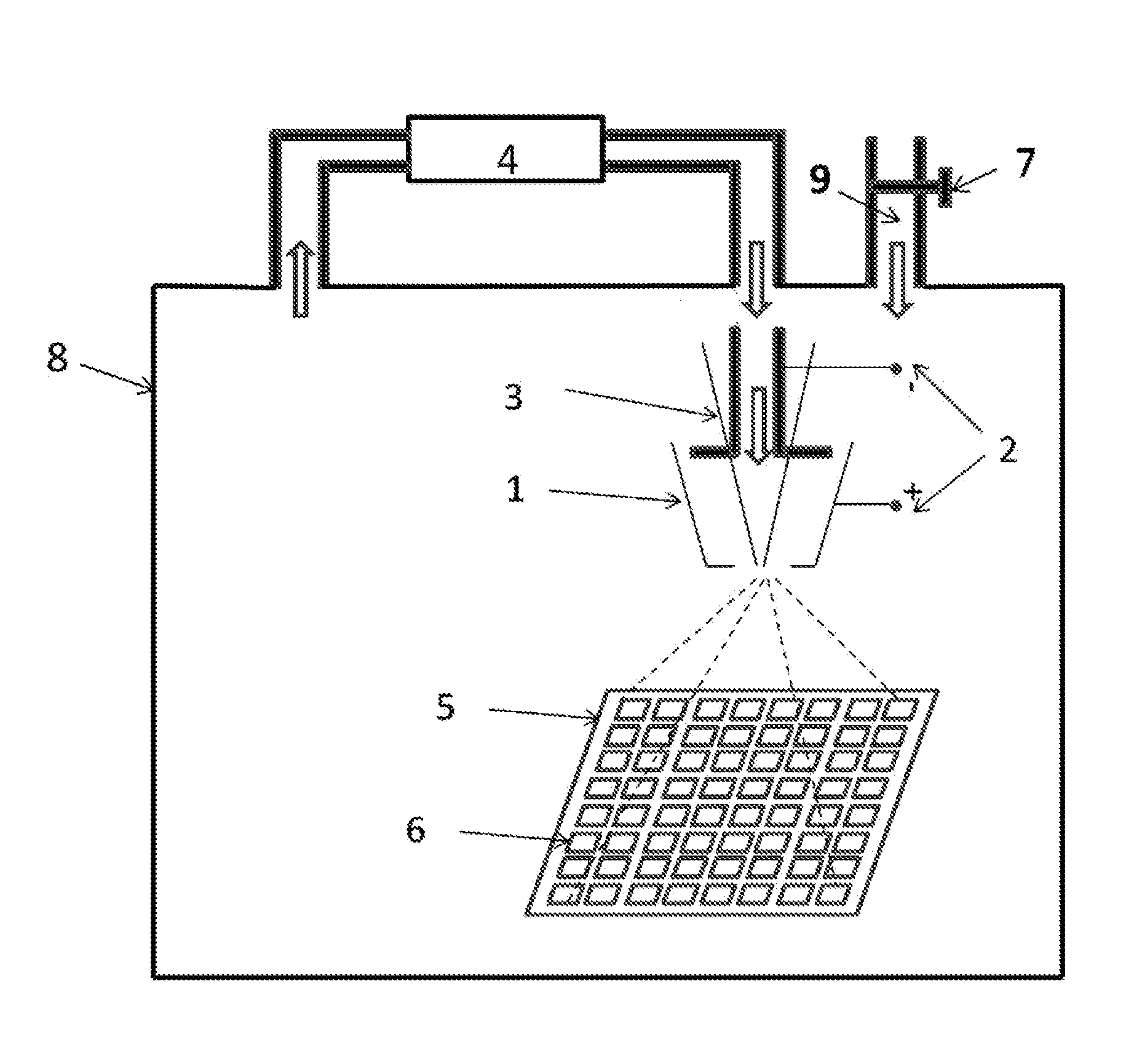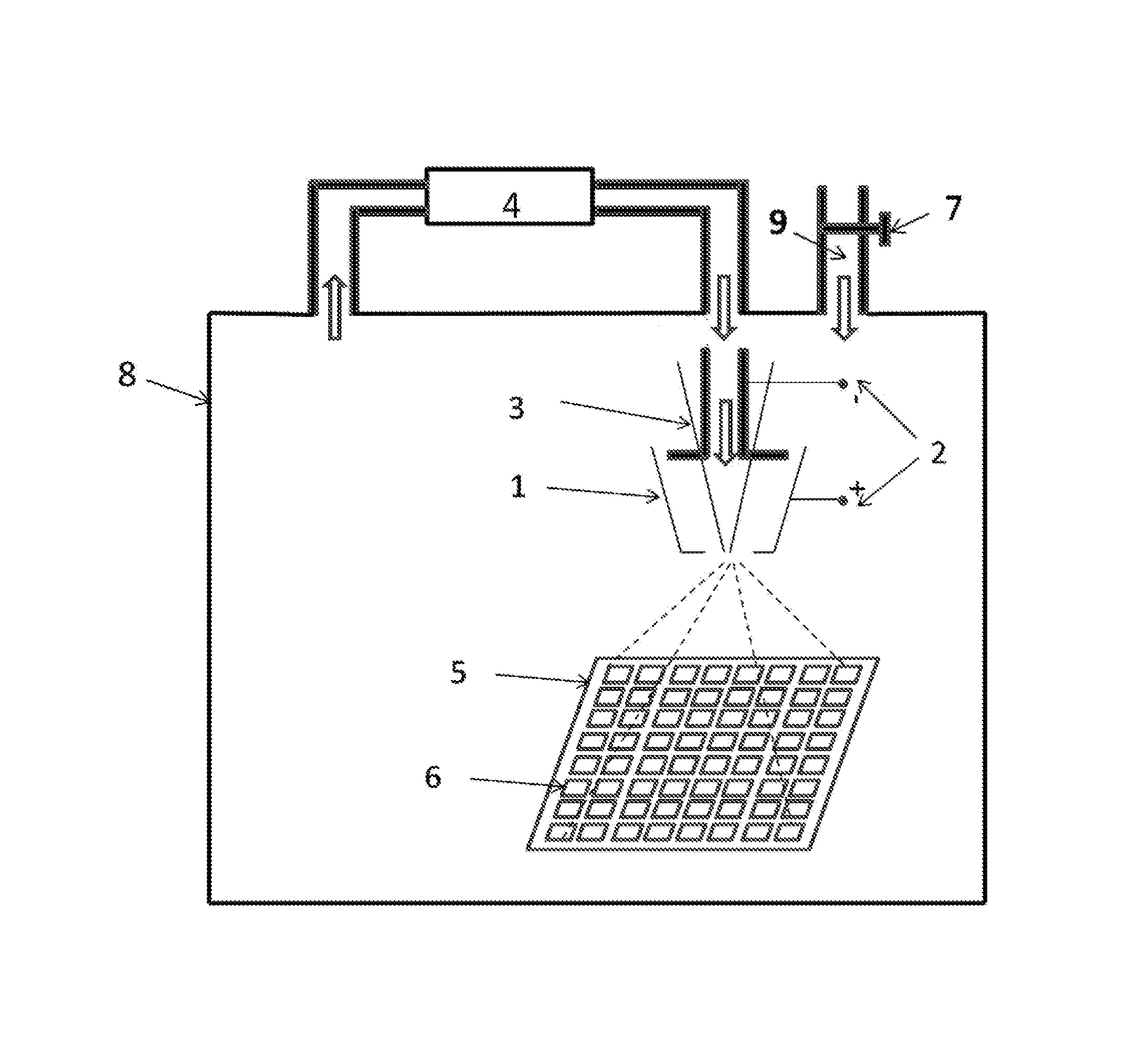Method for preparing r-fe-b based sintered magnet
a sintered magnet and fe-b technology, applied in the field of preparing r — fe — b based sintered magnets, can solve the problems of complex process, low yield, and complicated method operation, and achieve low production cost, high yield, and simple operation
- Summary
- Abstract
- Description
- Claims
- Application Information
AI Technical Summary
Benefits of technology
Problems solved by technology
Method used
Image
Examples
example 1
[0035]A mixture was prepared that comprised 23.8 wt. % of Nd, 5 wt. % of Pr, 0.6 wt. % of Dy, 0.4 wt. % of Tb, 68.29 wt. % of Fe, 0.5 wt. % of Co, 0.13 wt. % of Cu, 0.1 wt. % of Ga, 0.1 wt. % of Al, 0.12 wt. % of Zr, and 1 wt. % of B. The mixture was poured in a vacuum melting furnace under an atmosphere of an inactive gas, a pouring temperature was controlled at 1450° C., and a rotational speed of a quenching roller was 60 rpm, so that flakes having a thickness of 0.3 mm were formed. The flakes were pulverized by hydrogen decrepitation and jet milling to yield powder with an average particle size of 3.5 μm. The power was compressed under a 15 KOe magnetic field to form a compact. The compact was then placed in a sintered furnace under an Ar atmosphere and sintered at the temperature of 1100° C. for 5 hrs to obtain a green body. Thereafter, the green body was aged at the temperature of 500° C. for 5 hrs to obtain a sintered blank. The sintered blank is then machined to form magnet p...
example 2
[0038]The method for preparing 50 M magnet piece was the same as that in Example 1 that includes melting, pulverizing, pressing, heating, and wire cutting. The 50 M sintered magnet (40 mm*20 mm*4 mm) was degreased, washed by acid, activated, washed by deionized water, and desiccated, respectively. 20 pieces*10 pieces of sintered magnets were placed in a hot spraying sealed box and the surface of each sintered magnet was hot sprayed with a layer of Tb having a thickness of 20 μm on one side thereof, the sintered magnet was then turned over in a glove box, and the other side of the sintered magnet was hot sprayed with another layer of Tb having a thickness of 20 μm. The sintered magnet after the hot spraying treatment was transferred to a vacuum sintering furnace, maintained at the temperature of 945° C. under an Ar pressure of 5 kPa for 48 hrs, and then aged for 5 hrs at the temperature of 500° C. After that, the vacuum sintering furnace was charged with Ar to be cooled to the room t...
example 3
[0040]The method for preparing 50 M magnet piece was the same as that in Example 1 that includes melting, pulverizing, pressing, heating, and wire cutting. The 50M sintered magnet (40 mm*20 mm*4 mm) was degreased, washed by acid, activated, washed by deionized water, and desiccated, respectively. 20 pieces*10 pieces of sintered magnets were placed in a hot spraying sealed box and the surface of each sintered magnet was hot sprayed with a layer of Dy having a thickness of 20 μm on one side thereof, the sintered magnet was then turned over in a glove box, and the other side of the sintered magnet was hot sprayed with another layer of Dy having a thickness of 20 μm. The sintered magnet after the hot spraying treatment was transferred to a vacuum sintering furnace, maintained at the temperature of 930° C. for 24 hrs, and then aged for 5 hrs at the temperature of 500° C. After that, the vacuum sintering furnace was charged with Ar to be cooled to the room temperature. A firedoor of the v...
PUM
| Property | Measurement | Unit |
|---|---|---|
| thickness | aaaaa | aaaaa |
| thickness | aaaaa | aaaaa |
| temperature | aaaaa | aaaaa |
Abstract
Description
Claims
Application Information
 Login to View More
Login to View More - R&D
- Intellectual Property
- Life Sciences
- Materials
- Tech Scout
- Unparalleled Data Quality
- Higher Quality Content
- 60% Fewer Hallucinations
Browse by: Latest US Patents, China's latest patents, Technical Efficacy Thesaurus, Application Domain, Technology Topic, Popular Technical Reports.
© 2025 PatSnap. All rights reserved.Legal|Privacy policy|Modern Slavery Act Transparency Statement|Sitemap|About US| Contact US: help@patsnap.com


